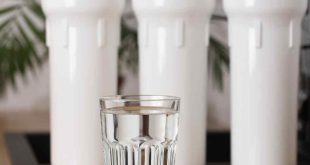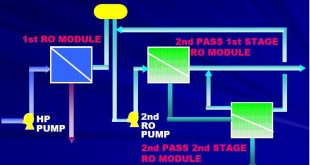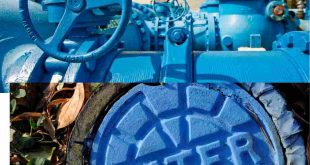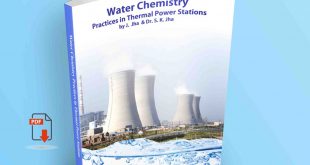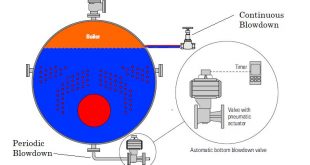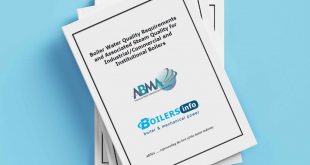Nowadays Reverse Osmosis Water Filtration System ( water softening RO Reverse Osmosis plant ) is widely used in both domestic and industrial use. In homes, reverse osmosis drinking water is used. in industry, Reverse Osmosis Water Filtration System is installed to provide feed water to the steam boilers and other systems.
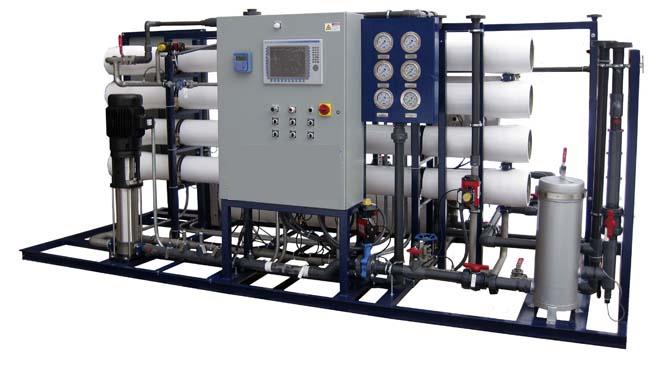
The principle of Reverse Osmosis Water Filtration System
The phenomenon of osmosis occurs when pure water flows from a dilute saline solution through a membrane into a higher concentrated saline solution. The phenomenon of osmosis is illustrated as follows:
A semi-permeable membrane is placed between two compartments. Semi-permeable means; the membrane is permeable to some species and not permeable to others. Assumed that this membrane is permeable to water but not to salts. Then, place a salt solution in one compartment and pure water in the other compartments. The membrane will allow water to permeate through it to either side. But salts cannot pass through the membranes. As a fundamental rule of nature, this system will try to reach equilibrium. That is it will try to reach the same concentration on both sides of the membrane. The only possible way to reach equilibrium is for water to pass from the pure water compartment to the salt-containing compartment, to dilute the salt solution. It shows that osmosis can cause a rise in the height of the salt solution. This height will increase until the pressure of the column of water is so high that the force of this water column stops the water flow. The equilibrium point of this water column height in terms of water pressure against the membrane is called osmotic pressure. If a force is applied to this column of water, the direction of water flow through the membrane can be reversed. This is the basis of the term reverse osmosis. Note that this reversed flow produces pure water from the salt solution since the membrane is not permeable to salt.
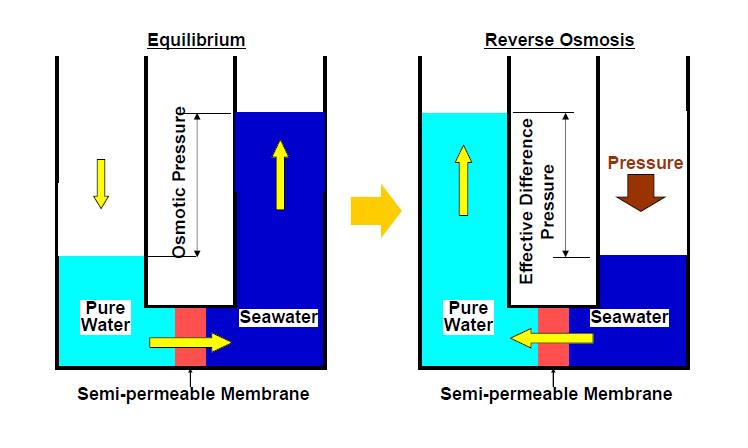
A simplified reverse osmosis process consists of a high-pressure pump and membrane module. High-pressure Pump pressurized saline feed water to the module system. Within the module consisting of the pressure vessel and a membrane element, the feed water will be split into a low-saline product, called permeate, and a high-saline brine, called concentrate or reject. A flow regulating valve called a concentrate valve, controls the percentage of feed water that is going to the concentrate stream and the permeate which will be obtained from the feed. In the case of a spiral wound module consisting of a pressure vessel and several spiral wound elements, pressurized water flows into the vessel and through the channels between the spiral windings of a spiral wound element. Up to eight elements can be connected together within a pressure vessel. The feed water becomes more and more concentrated and will enter the next element, and at last exits from the last element to the concentrate valve where the applied pressure will be released. Permeate of each element is collected in the common permeate tube installed in the center of each spiral wound element and flows to permeate collecting header outside the pressure vessel.
Reverse osmosis water benefits :
- It provides quality water
- Low cost
- Limited space requirements
- Portable designs
- Reverse Osmosis removes a large majority of contaminants from water & tastes better for home users.
- Boiler Feed Water Pump Working Principle and Operation
- Deaerator Working Principle
- Boiler Water Treatment Basic
 Boilersinfo Boiler and Mechanical Power Digital Library
Boilersinfo Boiler and Mechanical Power Digital Library
